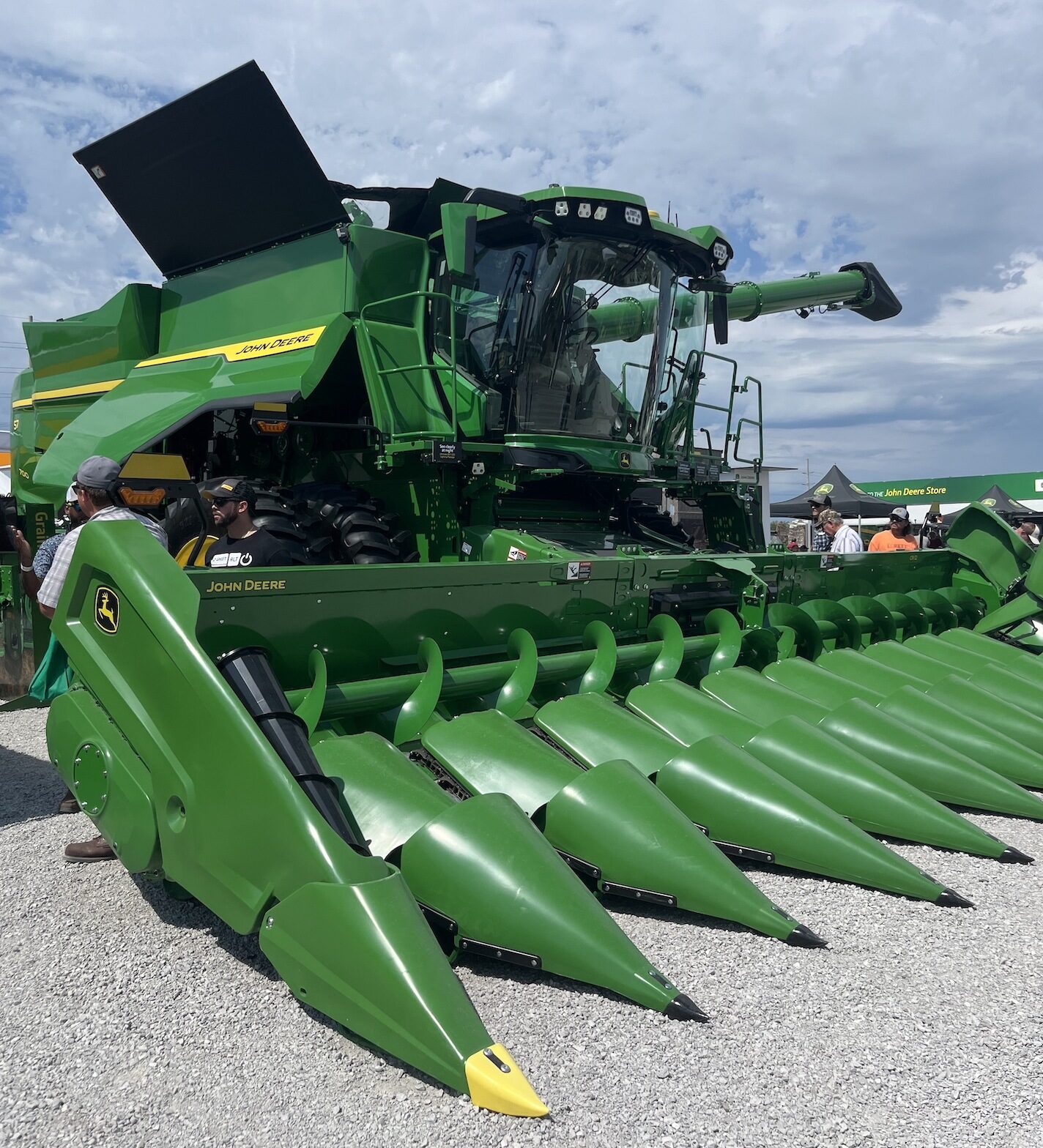Latest News

A John Deere combine on display at Farm Progress in Boone, Iowa. Photo: Via Satellite
John Deere is going through an early access program for certain customers to test the company’s new agriculture connectivity solution with Starlink.
Via Satellite spoke with Michael Kool, John Deere senior product manager of Connectivity, at the Farm Progress Show in Boone, Iowa, this week to get an update on the Starlink rollout. Announced in January, John Deere will sell an aftermarket kit with a ruggedized Starlink terminal and a cellular modem to connect agricultural machines to the company’s farm management system.
Kool said John Deere has paying customers in the U.S. and Brazil who purchased a limited amount of Starlink terminals and kits as part of the early access program. Deere is working with specific equipment dealers in certain regions to trial the solution.
Some customers have used the solution during harvest this year for in-field data sharing, to track the logistics of their fleet and connect their mobile devices to the Starlink solution to make phone calls to help run the operations.
In Brazil, the product has “exceeded expectations,” he said. The connectivity gives farmers the ability to use remote display access, giving an equipment dealer access into the cab without making a visit to the machine, which may be hours away from the nearest dealership.
“If you’re in the state of Mato Grosso, which is the largest producing state in Brazil, a dealer could be seven hours away from that machine and quickly remote display into that machine,” Kool said. This allows dealers to “troubleshoot the issue they’re having, to get them back up and running without a visit or any downtime. It’s impactful.”
Brazil is a key market John Deere is targeting for the Starlink product because cellular connectivity is not widespread in rural areas. In the U.S., Kool said the solution will be most applicable in states in the West like Montana, near national parks and mountainous regions where the topography impedes cellular coverage.
The program has also given John Deere insight into how to improve the solution — such as how to better ruggedize the mounting bracket and make it “foolproof” for dealers to install, Kool said.
Yet the company was not promoting the Starlink solution to its customers during the Farm Progress Show in Iowa, which attracts thousands of growers and producers from the U.S. and around the world. Kool explained the company prefers to highlight products that are currently in production and plans to highlight the solution at future trade shows.
Case IH, another agricultural machinery company working on a similar satellite solution with Intelsat, showcased a 3D printed version of its upcoming satellite terminal as well as a brief description of the product for attendees.
John Deere plans to start production on the solution in November. The company worked closely with Starlink to engineer changes to the Starlink terminal for this application, and Starlink will manufacture the product, with the changes.
In terms of whether or Starlink’s agreement with John Deere is exclusive or if Starlink can sell the modified terminal to other customers, Kool was unable to share specifics of the confidential agreement. But he said the company was “smart” going into the deal and the contract is “mutually beneficial.”
“It’s been a really cool experience seeing how our two teams blend together and ultimately deliver a solution that is a first of its kind in our vertical,” Kool said of collaborating with Starlink through this process.
Kool said Deere is finalizing the pricing for the terminal and connectivity service. The hardware will have a one-time cost, and the data plan will be unlimited. Pricing will vary between countries.
“We’re going to make that [hardware] a lean price that really sets the market and helps us to proliferate that solution with our customers. We want them to get on the machines. We want them to adapt and fully utilize connectivity,” he said.
In addition, customers will have the option to purchase terminals for each of their machines for planting, spraying, and harvest, etc. — or to move one terminal across their machines.
“We’ve seen varying instances where customers want to buy one for every machine, because their operation could really fully utilize that. Or, if they want to get into it [with] baby steps, they can order one [terminal] and move it across. We’ll make it possible for them to do that,” Kool said.
John Deere has talked about how the Starlink solution will help the company meet its goal of a fully autonomous farming system by 2030. Kool said the tests have shown how the solution will help customers adopt more tech.
“Not only does it help them to be more productive today with the existing tech that they have on their machines — but as they want to grow their tech stack with new displays, new hardware sets, autonomy, See & Spray, etc. — it’s going to make the solutions that much more robust and seamless to operate,” Kool said.
Get the latest Via Satellite news!
Subscribe Now